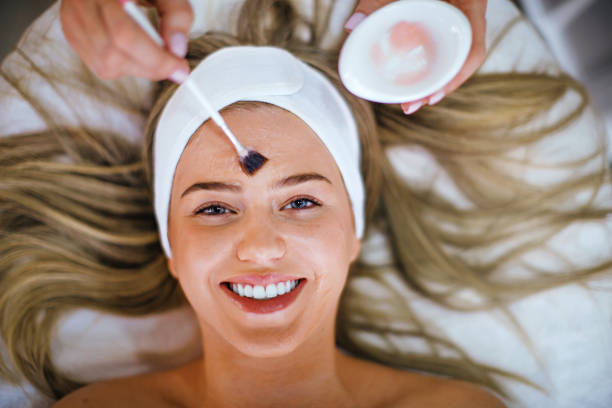The most severe acne treatments are usually reserved for the most persistent and severe cases of acne, often referred to as cystic or nodular acne. These treatments come with significant side effects and are generally considered when other treatments have failed.
- Oral Isotretinoin (Accutane):
- Overview: Isotretinoin is a powerful oral retinoid that targets all major causes of acne, including excess oil production, clogged pores, bacteria, and inflammation.
- Effectiveness: It’s often highly effective, with many patients experiencing long-term remission after a single course.
- Side Effects: It can cause severe dryness of the skin and lips, nosebleeds, joint pain, and more serious side effects like liver damage, elevated cholesterol levels, and birth defects if taken during pregnancy. Regular blood tests are required to monitor its impact on the body.
- Systemic Antibiotics:
- Overview: These are used to reduce inflammation and bacteria, typically in combination with topical treatments.
- Effectiveness: Antibiotics like doxycycline and minocycline can be effective but are usually not a long-term solution due to the risk of antibiotic resistance.
- Side Effects: They can cause gastrointestinal upset, increased sensitivity to sunlight, and in some cases, long-term use can lead to antibiotic resistance or other systemic issues.
- Hormonal Treatments:
- Overview: For women, severe acne can sometimes be treated with hormonal therapies such as birth control pills or spironolactone, which reduce androgen levels and thus decrease oil production.
- Effectiveness: This can be very effective for acne linked to hormonal fluctuations.
- Side Effects: These can include menstrual irregularities, breast tenderness, and an increased risk of blood clots, especially in smokers or women over 35.
- Intralesional Corticosteroid Injections:
- Overview: For very severe or painful nodules or cysts, a dermatologist might inject a corticosteroid directly into the lesion.
- Effectiveness: This can rapidly reduce inflammation and pain, but it’s not a long-term solution.
- Side Effects: Overuse can cause skin thinning or discoloration at the injection site.
Due to the potential side effects, these treatments are carefully monitored by healthcare providers, and the decision to use them is based on a thorough evaluation of the patient’s acne severity, medical history, and risk factors.

What is the correct acne treatment?
The correct acne treatment varies based on the severity of the acne, skin type, underlying causes, and individual response to different treatments. Here’s a general guide on how acne treatment is typically approached:
1. Mild Acne:
- Common Symptoms: Whiteheads, blackheads, or small pimples.
- Treatment Options:
- Topical Over-the-Counter (OTC) Products:
- Benzoyl Peroxide: Helps kill bacteria and reduce inflammation. It can also help clear blocked pores.
- Salicylic Acid: Helps exfoliate the skin and clear pores, reducing blackheads and whiteheads.
- Topical Retinoids: Such as adapalene (Differin), which helps increase cell turnover and prevent clogged pores.
- Daily Skincare Routine:
- Gentle Cleanser: Use a mild cleanser to avoid irritating the skin.
- Non-comedogenic Moisturizer: Keeps the skin hydrated without clogging pores.
- Sun Protection: Use a broad-spectrum sunscreen, as acne treatments can increase sun sensitivity.
- Topical Over-the-Counter (OTC) Products:
2. Moderate Acne:
- Common Symptoms: More frequent breakouts, inflamed pimples, and pustules.
- Treatment Options:
- Prescription Topicals:
- Topical Retinoids: Stronger formulations like tretinoin can be prescribed to prevent pore clogging.
- Topical Antibiotics: Clindamycin or erythromycin combined with benzoyl peroxide can reduce bacterial growth and inflammation.
- Combination Treatments: Products that combine benzoyl peroxide with a retinoid or antibiotic.
- Oral Medications:
- Oral Antibiotics: Doxycycline or minocycline may be prescribed for their anti-inflammatory properties.
- Hormonal Therapy: For women, birth control pills or spironolactone might be prescribed to regulate hormones contributing to acne.
- Prescription Topicals:
3. Severe Acne:
- Common Symptoms: Large, painful cysts or nodules, widespread breakouts, and significant inflammation.
- Treatment Options:
- Oral Isotretinoin (Accutane): This is often considered the most effective treatment for severe, resistant acne.
- Oral Antibiotics: Often combined with topical treatments.
- Hormonal Therapy: Particularly effective in women with hormonal imbalances.
- Intralesional Corticosteroids: For large, painful cysts, injections can reduce swelling and prevent scarring.
- Light and Laser Therapies: These can be used in combination with other treatments to reduce bacteria and inflammation.
4. Maintenance:
- After achieving clear skin, maintenance therapy is crucial to prevent recurrence.
- Topical Retinoids: Often recommended for long-term maintenance.
- Benzoyl Peroxide: Can be continued in a lower concentration to prevent new breakouts.
- Consistent Skincare Routine: Continue using gentle cleansers, moisturizers, and sun protection.
5. Other Considerations:
- Diet and Lifestyle: Some individuals find that reducing high-glycemic foods or dairy products helps with acne. Stress management and good sleep are also important.
- Professional Guidance: Seeing a dermatologist can provide personalized treatment based on your specific skin type and acne severity. They can adjust treatments as needed and help manage side effects.
Choosing the correct treatment often involves some trial and error. It’s important to give each treatment time to work, as acne treatments can take several weeks to show noticeable results. If you’re unsure which approach is right for you, consulting with a dermatologist is the best step
